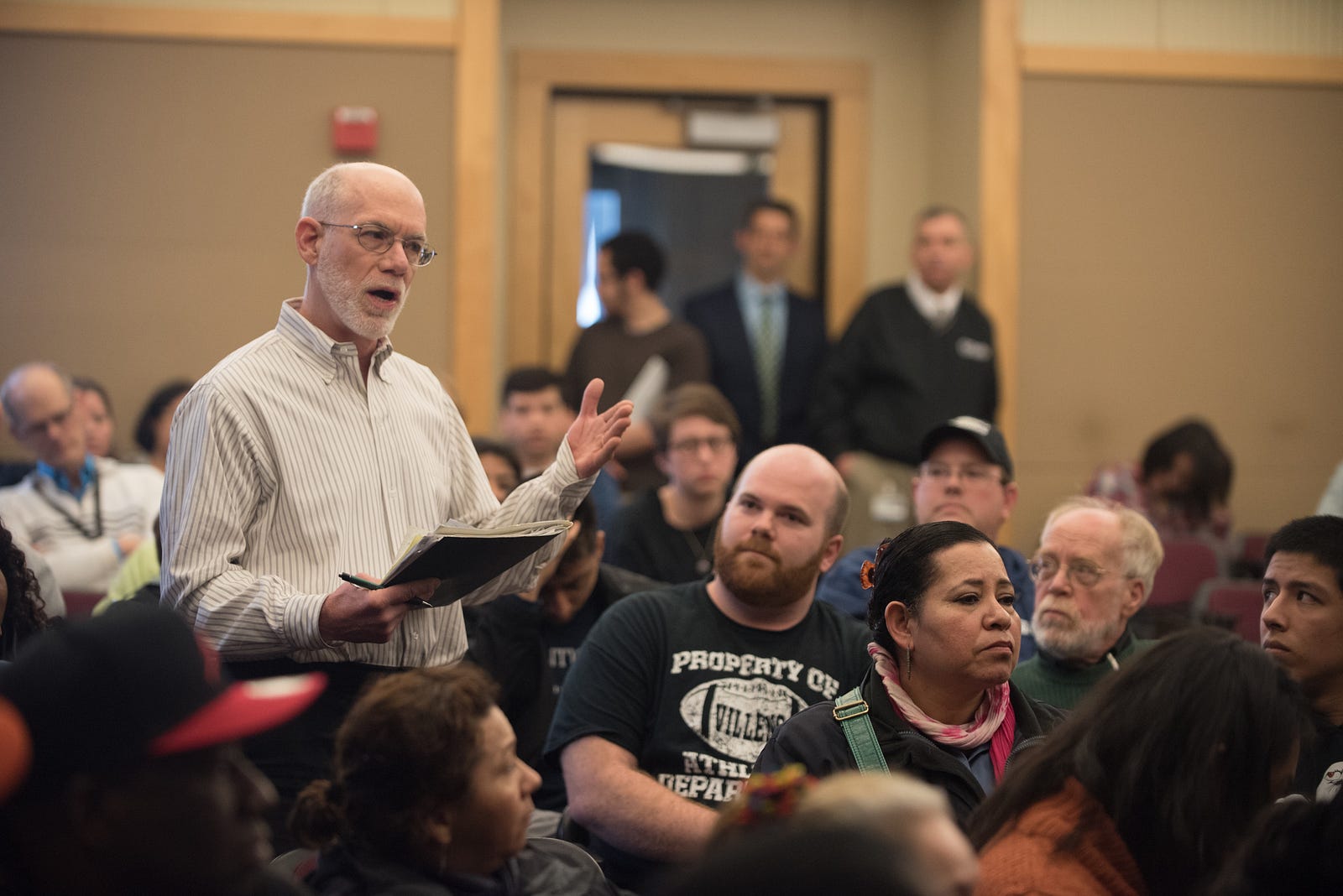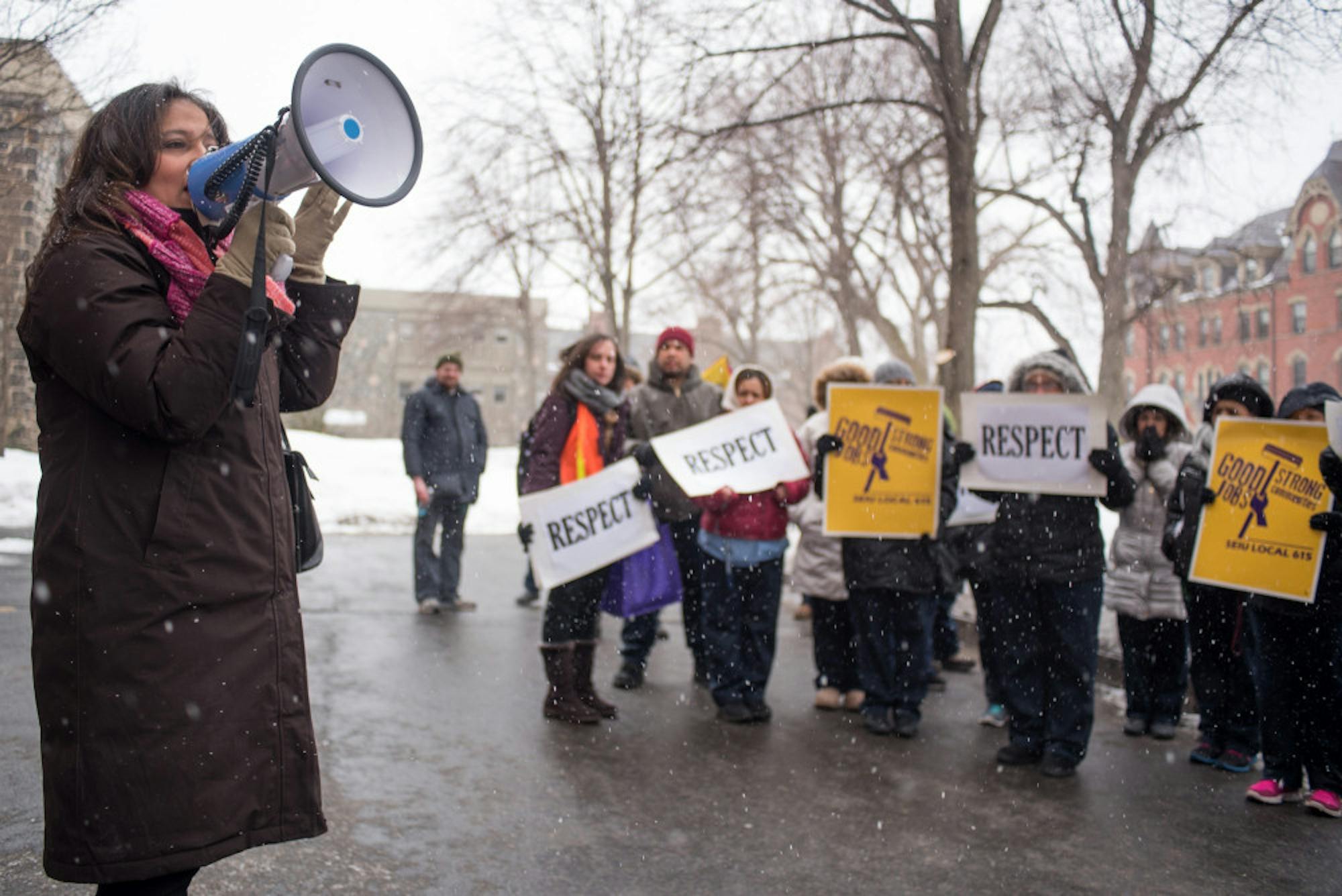The company from which Tufts contracts its custodial services, DTZ, formerly UGL Unicco, has had a business relationship with the university since 2011. While custodians, union representatives and students demanded that the university make no cuts to the janitorial staff, members of the administration defended the decision to reallocate custodial labor and said that the terms of the reorganization were to be determined by DTZ alone.
"[The Tufts administration] asked [DTZ] to put more resources into cleaning busier areas of campus with high student activity, such as dorms, athletics facilities and libraries, and fewer resources into cleaning administrative offices," Executive Director of Public Relations Kim Thurler told the Daily in an email. "However, it was up to DTZ to come up with a detailed plan and specific recommendations."
In the second part of this series, the Daily charted the periodic shifts in custodial labor at Tufts, and the ensuing student and worker demonstrations, since Tufts first outsourced its janitorial staff in 1994. In this installment, we examine the financial contexts for such decisions at Tufts and at universities nationwide.
Rising University Costs
A story in the September/October 2011 Washington Monthly cited rising administrative costs as a major factor in increased university expenditure across American colleges between 1998 and 2008. The article pointed to a 36 percent increase in administrative spending by America's private colleges.
A follow-up report by Rita Kirshstein, director of the Delta Cost Project, whose data was included in the Washington Monthly article, found that “administrative bloat” occurred mostly in mid-level professional positions.
"[M]any of these administrators are performing services that both faculty and students have come to expect," Kirschstein said in the report, citing responsibilities related to tutoring, financial aid and information technology (IT).
The New England Center for Investigative Reporting found that Tufts, in 2011, had increased the number of full-time administrators by roughly 29% and full-time professional staff by roughly 119 percent since 1987, during which time student enrollment increased by 51 percent. However, at the end of 2012, Tufts launched its Tufts Effectiveness in Administrative Management (TEAM) initiative, a project intended to streamline some administrative practices such that annual expenses would be reduced by about $15 million, according to the TEAM website.
"Expense growth has exceeded revenue growth most years since 2008, which, combined with one-time investments in systems and TEAM implementation, resulted in a projected deficit in [Fiscal Year 2015]," the TEAM website says.
The projected deficit for Fiscal Year 2015, which lasted from July 2014 to June 2015, was $9.7 million, but the university ended the term with a $1.1 million surplus, according to a September announcement by University President Anthony Monaco.
The implementation of TEAM is slated for completion in July 2016, according to a message on the TEAM website. Its projects have included the integration of Tufts' IT services into Tufts Technology Services, the consolidation of budget management responsibilities, the implementation of new purchasing strategies and optimized research administration services.
"More than 600 people were involved in the budget process, which was time-consuming and inefficient," the TEAM website says.
The decision to reorganize custodial labor was a part of this cost-saving measure. While effects of streamlining on administrative staff was achieved "mostly through managed attrition, the process of not filling voluntarily vacated positions that are no longer needed," according to the TEAM website, the change in the university's contract with DTZ ultimately displaced 18 custodians, as was reported in Part One of this series.
Decision to Outsource
Tufts President emeritus John DiBiaggio said outsourcing to the university’s contractor saved the school nearly $1 million annually, according to a 2001 Daily article. According to a study by the Institute for Higher Education Policy, 65 percent of institutions had made similar decisions by the same time, outsourcing between two and five of their services. Over a two-year period (2000–2002), outsourcing increased by eight percent nation-wide."The basic rationale for a college or university to outsource to a vendor could be summed up this way: I can’t do this, others can, I think I’ll let them," a February 2005 University Business Magazine said.
University of Wisconsin-Superior decided to outsource their custodial staff in 2014, resulting in a projected $500,000 in annual savings, according to a Nov. 19, 2014 Wisconsin Public Radio story, and a Feb. 21, 2013 report from the Daily Texan stated that The University of Texas (UT) Committee on Business Productivity estimates a savings of over $92 million over 10 years due to outsourcing services related to on-campus food, parking and housing services. The latter decision followed a 2005 cost-saving effort by the university, in which it outsourced its Central Receiving and Delivery division to a company called MagRabbit.
"The measure is expected to save the university about $200,000 annually for services that include receiving products from vendors and transportation companies, inspecting them for quantity and damage, delivering to departments on campus and providing other shipment and delivery services," a University of Texas news article said.
Opposition to Outsourcing
Tufts' 1994 decision to outsource its custodial staff was one of several such financial choices by Boston-area universities that drew community backlash.
On April 29, 2008, the Daily Free Press, Boston University's independent student newspaper, published a story about a protest demanding higher payer for janitors at Northeastern University. In the article, Roxana Rivera -- the current Vice President of Service Employees International Union (SEIU) 32BJ, which represents custodians who work on Tufts' campuses -- attributed unsatisfactory pay to outsourcing practices.
"One of the protesters, Roxana Rivera, said Boston University janitors receive far better treatment [than Northeastern University janitors], partially because BU does not outsource its hiring, resulting in more 'livable' wages," the article said.
 Mark Niedergang, Somerville Alderman for Ward 5, voices his opposition to the university’s proposed layoffs during the Open Forum on the Administration’s Plan for Janitorial Staff event in Braker Hall on Friday, March 27. (Nicholas Pfosi / Tufts Daily Archive)
Mark Niedergang, Somerville Alderman for Ward 5, voices his opposition to the university’s proposed layoffs during the Open Forum on the Administration’s Plan for Janitorial Staff event in Braker Hall on Friday, March 27. (Nicholas Pfosi / Tufts Daily Archive)The University of Wisconsin-Superior (UW-Superior) also announced a plan to outsource its custodial and ground services in 2014 despite community protests, according to a Nov. 19, 2014 Wisconsin Public Radio story.
“There is nothing fair or right about eliminating these hard-working employees who made decent but hardly excessive wages and replace them with employees who will receive low wages and few benefits paid for by an out-of-state corporation which will profit from the downsizing of our workforce,” three Wisconsin lawmakers wrote in a statement quoted in the story.
In 2006, at the University of Miami, over 200 outsourced janitors -- employed by UGL Unicco, which was affiliated with DTZ until late 2014 -- participated in a seven-week-long walkout, and 10 entered into a several-week hunger strike along with five students, according to an April 18, 2006 New York Times article. The non-unionized, majority Cuban and Haitian immigrant workforce protested earning roughly $6.40 per hour without health care benefits.






